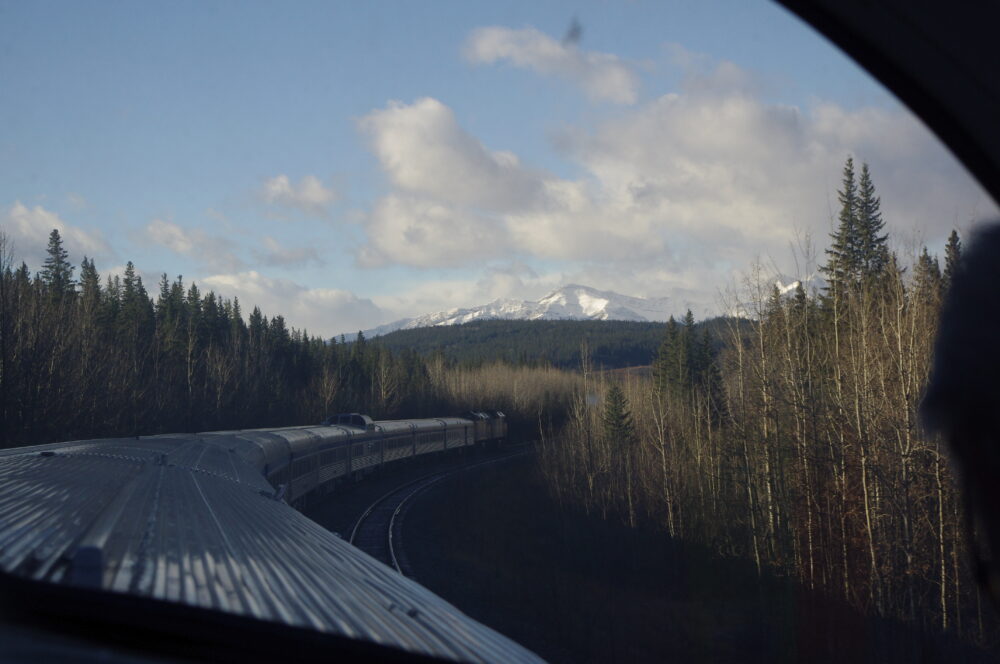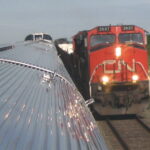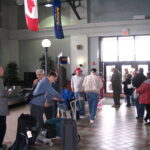VIA’s Flagship Train In Trouble?
VIA Rail Canada’s premier train, The Canadian, runs between Toronto and Vancouver. I’ve made that trip nine times. (It could be ten, I’m not sure.) The ride is therapy, reminding all passengers what it must have been like to travel with elegance and style.
As you gaze out the window, perhaps while enjoying excellent food and drink in the dining car or the view from the dome on the bullet-ended Park Car, the westbound train the train takes you through fertile farmland and dense forests, crosses endless fields of grain, before entering the glorious Rockies. Then it descends through the incredible Fraser River valley into Vancouver. It’s all right there . . . right outside your window.

But all of that is in jeopardy because of—in railroad lingo— the Canadian’s OTP. That means On Time Performance and it’s been bad. No, it’s been terrible! And the VIA execs see nothing that would indicate change for the better is coming . . . at least that’s the conclusion one draws when they refer to “unsustainable OTP issues.”
If you personally haven’t made that trip, you need to understand that VIA trains #1 and #2 don’t just run late, they run very, very late.
Over the past several years, as the on-time problem has gotten worse, VIA has tried to compensate by adding hours to the train’s schedule—more than 10 hours, so far. But that just created other problems because there was no increase in revenue, but it now costs more to operate the train—overtime for employees, for food, and for fuel.
Still, the trains continue to run late. How late? The report makes reference to—and this one phrase tells us just how big this problem really is—“delays of up to 43 hours.”
And so, because of the inevitable-habitual-and-multiple delays that Trains 1 and 2 were experiencing, VIA cut their weekly schedule from three round trips to two and added another night to the schedule. Once again that meant a corresponding increase in cost—for labor, for food and for fuel. And of course it also meant a loss of revenue .
So why is this happening? Although they don’t say so in the report, the main reason for all this is that the VIA trains are running on track owned by Canadian National Railway and the CN dispatchers give priority to their freight trains. In other words, people sit and wait and Via Rail has faced increased cost and declining revenue so the Chinese Toaster Ovens can arrive on time.




VIA’s Canadian is screwed six ways to Sunday. The Budd cars are literally falling apart at this point, and VIA has admitted that there is very little useful life left in them. CN’s track is overly strained, and CP has a highly incompetent management that is, literally, catching their trains on fire. Unless Transport Canada decides to adopt a cohesive policy about rail passenger/freight transport, we can expect the final run of what is left of the Canadian to occur in the next few years.
It would seem CN is indifferent at best, and often openly hostile at worst, to passenger trains. I would like to see some government involvement to protect in effect their own crown corporation, but can’t say I’m very hopeful. It’s not just Washington where passenger trains have very little friends, especially the long distance ones.
VIA pays CN quite handsomely for the ability to transit (formerly) six trains a week over CN tracks. The issue is weak management at VIA who will not take CN to task to have their contract enforced. The issues are wholly CN’s making. The problem occurs mainly in the Melville, SK division which then creates further issues down the line. The trains ex Vancouver and Toronto are generally, within reason, timely but as they approach Melville all hell breaks loose for the schedulers.